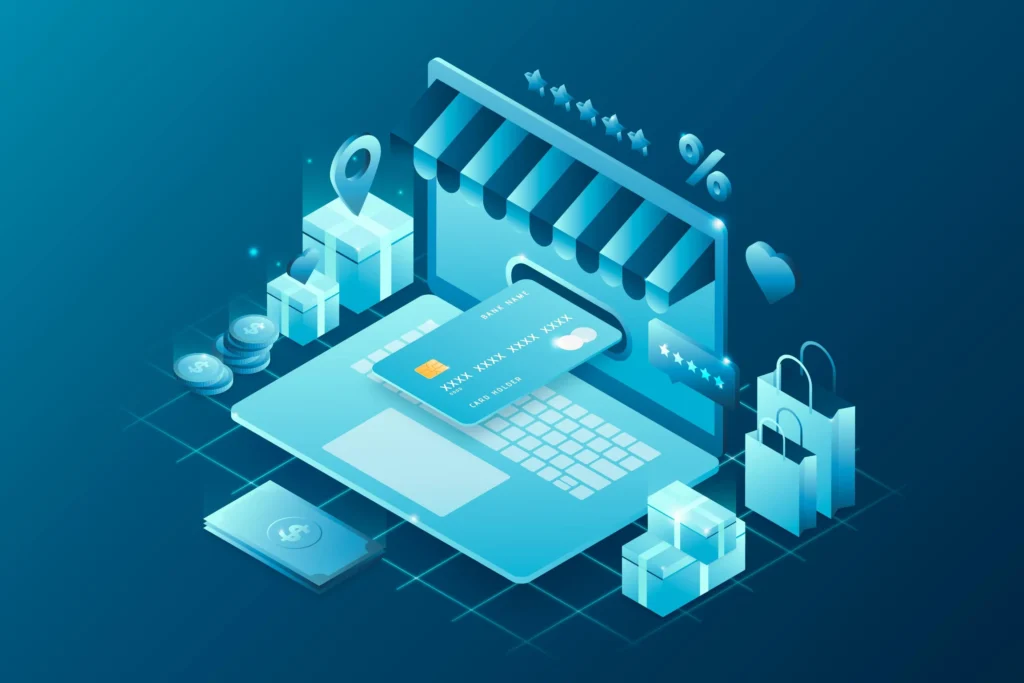The internet has revolutionized how we work, live, and earn income. With just a laptop and an internet connection, anyone can tap into the vast opportunities of the digital world to generate income online. Whether you’re looking to escape the 9-to-5 grind, fund your travels, or build a sustainable side hustle, the online space offers unparalleled flexibility and potential. From affiliate marketing to app development, the possibilities are endless, catering to diverse skills, interests, and goals. In this extensive guide, we’ll explore the top 7 ways to make money online, diving deep into each method with actionable strategies, examples, and additional insights to help you succeed in 2025 and beyond.
Table of Contents
1. Affiliate Marketing: Earn Commissions by Promoting Products
Affiliate marketing remains one of the most accessible and lucrative ways to make money online. It involves promoting products or services from other companies and earning a commission for every sale or lead generated through your efforts. This method is ideal for beginners because it requires minimal upfront investment and no product creation.

How Affiliate Marketing Works
To succeed in affiliate marketing, you need a platform—such as a website, blog, social media account, or YouTube channel—to share your affiliate links. When someone clicks your link and makes a purchase on the partner’s site, you earn a commission, typically ranging from 5% to 50%, depending on the program. The beauty of affiliate marketing lies in its simplicity: you focus on driving traffic and let the affiliate partner handle inventory, shipping, and customer service.
Steps to Get Started
- Choose a Niche: Select a profitable niche with high demand, such as health and wellness, technology, or personal finance. Research trends on platforms like Amazon, ClickBank, or CJ Affiliate to identify products with strong market appeal.
- Join Affiliate Programs: Sign up for reputable affiliate networks like Amazon Associates, ShareASale, or Rakuten. Many brands also offer in-house programs, such as Shopify or Bluehost.
- Create Quality Content: Build a blog, YouTube channel, or social media presence to share valuable content related to your niche. For example, a fitness blog could review workout gear or supplements, embedding affiliate links.
- Drive Traffic: Use SEO, social media marketing, or email campaigns to attract visitors to your platform. Tools like Google Analytics can help track performance.
- Optimize for Conversions: Craft compelling calls-to-action (CTAs) and ensure your affiliate links are strategically placed within your content.
Examples of Success
Consider Pat Flynn of Smart Passive Income, who earns six figures annually through affiliate marketing by promoting tools like ConvertKit and Teachable on his blog and podcast. Another example is Michelle Schroeder-Gardner of Making Sense of Cents, who generates over $50,000 monthly by promoting financial products through her blog.
Pros and Cons of Affiliate Marketing
| Size | Pros | Cons |
|---|---|---|
| Small | Low startup costs; no need to create products | Requires consistent traffic to earn significant income |
| Medium | Passive income potential once content ranks well | Competitive niches may require advanced SEO knowledge |
| Large | Scalable with multiple platforms and products | Commission rates vary, and some programs have strict rules |
| Huge | Flexibility to work from anywhere with minimal overhead | Income depends on external factors like affiliate program changes |
Tips for Success
- Focus on evergreen niches to ensure long-term profitability.
- Use tools like Ahrefs or SEMRush to find low-competition keywords.
- Be transparent about affiliate links to build trust with your audience, as required by FTC guidelines.
2. Selling on Third-Party Platforms: Leverage Amazon, eBay, Etsy, and Craigslist
Selling products on established e-commerce platforms like Amazon, eBay, Etsy, and Craigslist is a fast track to online income. These platforms have millions of active users, built-in trust, and robust infrastructure, making them ideal for beginners and seasoned entrepreneurs alike.

Why Sell on Third-Party Platforms?
Each platform caters to different types of sellers:
- Amazon: Perfect for scaling a business with access to Fulfillment by Amazon (FBA), where Amazon handles storage, shipping, and customer service.
- eBay: Ideal for auction-style sales or fixed-price listings, allowing sellers to tap into bidding wars for higher profits.
- Etsy: Best for artisans selling handmade, vintage, or craft supplies, with a focus on unique, creative products.
- Craigslist: Great for local sales of physical goods, from furniture to electronics, with no listing fees.
Getting Started
- Choose Your Platform: Select based on your product type. For example, sell handmade jewelry on Etsy or electronics on eBay.
- Set Up a Seller Account: Verify your identity and link a payment method (e.g., PayPal for eBay). Each platform has a straightforward onboarding process.
- List Your Products: Use high-quality photos, detailed descriptions, and competitive pricing. Research competitors to ensure your listings stand out.
- Optimize for Search: Use relevant keywords in titles and descriptions to improve visibility. For instance, on Amazon, include terms buyers might search for, like “wireless earbuds noise-canceling.”
- Manage Orders: Fulfill orders promptly or opt for services like FBA to streamline operations.
Fees and Costs
| Platform | Small Size (Fees) | Medium Size (Features) | Large Size (Reach) | Huge Size (Scalability) |
|---|---|---|---|---|
| Amazon | $0.99/item or $39.99/month | FBA for logistics | Global audience | High sales volume potential |
| eBay | $0.10–$0.35 per listing | Auction or fixed pricing | Large buyer base | Flexible for small sellers |
| Etsy | $0.20 per listing | Craft-focused marketplace | Niche audience | Limited to handmade goods |
| Craigslist | Free listings | Local sales only | Regional reach | Limited scalability |
Success Stories
- Jessica Larrew of The Selling Family built a six-figure business using Amazon FBA by reselling discounted retail products.
- Etsy seller CaitlynMinimalist generates millions in revenue selling personalized jewelry, leveraging Etsy’s niche audience.
Additional Insights
- Private Labeling: Source products from manufacturers (e.g., via Alibaba) and sell them under your brand on Amazon.
- Dropshipping: Partner with suppliers to sell products without holding inventory, reducing upfront costs.
- Seasonal Trends: Capitalize on holidays or events by listing trending items, like Halloween decor in October.
3. Blogging: Build Authority and Monetize Your Passion
Blogging is a timeless method to make money online by sharing valuable content in a niche you’re passionate about. With consistent effort, blogs can generate income through ads, affiliate links, sponsored posts, or selling digital products.

How to Start a Blog
- Pick a Niche: Focus on a specific topic, like sustainable living, parenting, or tech reviews, to attract a targeted audience.
- Set Up Your Blog: Use platforms like WordPress, Wix, or Squarespace. Purchase a domain and hosting from providers like Bluehost or SiteGround.
- Create Content: Write in-depth articles, guides, or tutorials. Incorporate SEO best practices to rank higher on Google.
- Monetize Your Blog:
- Display Ads: Join ad networks like Google AdSense or Mediavine to earn per click or impression.
- Affiliate Marketing: Promote relevant products within your posts.
- Sponsored Content: Partner with brands for paid posts.
- Sell Products: Offer e-books, courses, or memberships.
Monetization Potential
| Size | Revenue Stream | Potential Earnings | Effort Level |
|---|---|---|---|
| Small | Google AdSense | $100–$1,000/month | Low traffic, basic setup |
| Medium | Affiliate Marketing | $1,000–$10,000/month | Moderate traffic, SEO |
| Large | Sponsored Posts | $5,000–$50,000/month | High traffic, authority |
| Huge | Digital Products/Courses | $50,000+/month | Established brand |
Examples of Success
- HuffPost started as a blog and grew into a media empire.
- Pinch of Yum earns over $100,000 monthly through food blogging, combining ads, affiliate links, and e-books.
Tips for Growth
- Post consistently (e.g., 1–2 times per week) to build an audience.
- Use Pinterest or Instagram to drive traffic to your blog.
- Invest in email marketing tools like Mailchimp to nurture your audience.
4. Niche E-commerce: Dominate a Specialized Market
Niche e-commerce involves selling products in a specific category, avoiding competition with giants like Amazon or Walmart. By focusing on a narrow market, you can become the go-to source for a dedicated audience.

Finding Your Niche
- Research Trends: Use tools like Google Trends, Jungle Scout, or Helium 10 to identify high-demand, low-competition products.
- Solve a Problem: For example, sell eco-friendly pet products or ergonomic office accessories.
- Leverage Your Expertise: If you’re passionate about fitness, sell specialized workout gear.
Setting Up Shop
- Choose a Platform: Use Shopify, WooCommerce, or BigCommerce to build your store.
- Source Products: Partner with suppliers via Oberlo for dropshipping or source from Alibaba for private labeling.
- Market Your Store: Use Google Ads, Facebook Ads, or Instagram influencers to drive traffic.
- Optimize for SEO: Include product-specific keywords and high-quality images to rank higher.
Success Stories
- Gymshark started as a niche fitness apparel brand and grew into a global phenomenon.
- MVMT Watches targeted affordable luxury watches, scaling to a $100 million acquisition.
Challenges and Solutions
| Size | Challenge | Solution |
|---|---|---|
| Small | High competition in broad niches | Focus on micro-niches |
| Medium | Inventory management | Use dropshipping or FBA |
| Large | Customer acquisition costs | Invest in SEO and email marketing |
| Huge | Scaling operations | Automate with tools like Zapier |
5. YouTube Channel: Monetize Video Content
YouTube is a powerhouse for earning money online, with creators like MrBeast and Ryan’s World proving its potential. From tutorials to vlogs, videos can generate income through ads, sponsorships, and merchandise.

Steps to Build a YouTube Channel
- Create a Channel: Sign up on YouTube and brand your channel with a logo and banner.
- Produce Content: Focus on niches like gaming, cooking, or tech reviews. Use a smartphone or basic camera to start.
- Optimize Videos: Use descriptive titles, tags, and thumbnails to attract clicks.
- Monetize: Join the YouTube Partner Program (requires 1,000 subscribers and 4,000 watch hours) to earn ad revenue.
- Engage Your Audience: Respond to comments and build a community.
Monetization Methods
- Ad Revenue: Earn from Google Ads displayed on your videos.
- Sponsorships: Partner with brands for paid promotions.
- Merchandise: Sell branded products via platforms like Teespring.
- Memberships: Offer exclusive content through YouTube Memberships.
Examples
- Tasty generates millions from food recipe videos, monetized through ads and brand deals.
- TechBurner, an Indian YouTuber, earns through tech reviews and sponsorships.
6. Selling E-books: Share Knowledge Digitally
E-books are a low-cost, high-margin way to make money online. With platforms like Amazon Kindle Direct Publishing (KDP), anyone can publish and sell e-books globally.

How to Create and Sell E-books
- Choose a Topic: Write about a subject you’re knowledgeable about, like personal finance or self-help.
- Write and Format: Use tools like Canva for covers and Scrivener for writing.
- Publish: Upload to KDP, Apple Books, or your own website.
- Market: Promote via social media, blogs, or email lists.
Revenue Potential
| Size | Sales Volume | Earnings |
|---|---|---|
| Small | 50–100 sales/month | $100–$500/month |
| Medium | 500–1,000 sales/month | $1,000–$5,000/month |
| Large | 5,000+ sales/month | $10,000–$50,000/month |
| Huge | Bestseller status | $100,000+/month |
Success Story
- Mark Dawson earns millions annually selling self-published thriller e-books through KDP.
7. App Development: Solve Problems with Technology
App development is a high-reward opportunity for those with innovative ideas. Even non-programmers can succeed by outsourcing development to freelancers.

Steps to Develop an App
- Identify a Need: Create an app that solves a problem, like a budget tracker or fitness planner.
- Hire Developers: Use platforms like Upwork or Toptal to find skilled programmers.
- Design and Test: Ensure the app is user-friendly and works on both iOS and Android.
- Launch and Market: Publish on Google Play and App Store, and promote via social media or influencers.
Examples
- Calm, a meditation app, generates millions through subscriptions.
- Duolingo started as a simple language-learning app and scaled globally.
Costs and Returns
| Size | Development Cost | Potential Revenue |
|---|---|---|
| Small | $1,000–$5,000 | $500–$5,000/month |
| Medium | $10,000–$50,000 | $5,000–$50,000/month |
| Large | $50,000–$100,000 | $100,000+/month |
| Huge | $100,000+ | Millions annually |
Additional Tips for Success in 2025
- Stay Updated: Follow trends on X and Google Trends to identify emerging opportunities.
- Invest in Skills: Take online courses on platforms like Udemy or Coursera to learn SEO, digital marketing, or coding.
- Build a Brand: Consistency in branding across platforms builds trust and recognition.
- Diversify Income: Combine multiple methods (e.g., blogging with affiliate marketing and e-books) for stability.
Conclusion
Making money online in 2025 is more accessible than ever, with opportunities ranging from affiliate marketing to app development. Each method offers unique advantages, whether it’s the low barrier to entry of selling on Amazon or the creative freedom of YouTube. By choosing a method that aligns with your skills and interests, investing in learning, and staying consistent, you can build a sustainable online income. Start small, experiment, and scale your efforts to achieve financial freedom from the comfort of your home.
Disclaimer
The information provided in “Top 7 Proven Ways to Make Money Online in 2025: A Comprehensive Guide to Building Wealth from Home” is for informational purposes only and should not be considered financial, legal, or professional advice. While the strategies discussed, such as affiliate marketing, e-commerce, and app development, are based on established methods and industry trends, success is not guaranteed and depends on individual effort, market conditions, and other factors. Always conduct thorough research and consult with qualified professionals before starting any online venture.
The author and publisher of this article and website (Manishchanda.net) are not responsible for any financial losses or risks incurred from implementing the ideas presented in this article. External platforms and services mentioned, such as Amazon, eBay, or YouTube, have their own terms and conditions, which you should review carefully.
Acknowledgements
The creation of “Top 7 Proven Ways to Make Money Online in 2025: A Comprehensive Guide to Building Wealth from Home” was made possible through the extensive research and insights gathered from a variety of reputable online sources. These platforms provided valuable data, case studies, and industry trends that helped shape the comprehensive strategies outlined in the article. I sincerely express my gratitude to the following websites for their contributions to the knowledge base that informed this guide:
- Entrepreneur: For insights on affiliate marketing and e-commerce trends.
- Forbes: For data on blogging and YouTube monetization strategies.
- Shopify: For detailed guides on setting up niche e-commerce stores.
- Amazon Associates: For information on affiliate marketing programs and best practices.
- eBay: For resources on auction-based selling and marketplace strategies.
- Etsy: For insights into selling handmade and niche products.
- Smart Passive Income: For case studies on affiliate marketing success.
- Making Sense of Cents: For practical advice on blogging and affiliate income.
- The Selling Family: For strategies on Amazon FBA and reselling.
- Oberlo: For dropshipping tips and e-commerce trends.
- Jungle Scout: For tools and data on Amazon product research.
- Helium 10: For insights into e-commerce optimization.
- Google Trends: For identifying market trends and niches.
- YouTube: For creator guidelines and monetization strategies.
- Amazon Kindle Direct Publishing: For resources on e-book publishing.
- Upwork: For information on hiring developers for app creation.
- WordPress: For blogging platform insights and setup guides.
- Bluehost: For hosting and domain registration advice.
- Ahrefs: For SEO strategies and keyword research tools.
- SEMRush: For digital marketing and SEO insights.
- Mailchimp: For email marketing strategies to promote online ventures.
These sources collectively provided a robust foundation for the article, ensuring its accuracy and relevance for aspiring online entrepreneurs in 2025 and beyond.
Frequently Asked Questions (FAQs)
FAQ 1: What is affiliate marketing, and how can I start earning money with it in 2025?
Affiliate marketing is a performance-based strategy where you earn a commission by promoting products or services from other companies. By sharing unique affiliate links on your website, blog, or social media, you receive a percentage of each sale or lead generated through your referrals. This method is popular due to its low startup costs and the fact that you don’t need to create products, manage inventory, or handle customer service. In 2025, affiliate marketing remains a top choice for beginners and seasoned entrepreneurs alike, with global affiliate spending projected to grow significantly.
To start, choose a niche with high demand, such as fitness, technology, or personal finance. Research trending products using tools like Google Trends or platforms like ClickBank. Next, join reputable affiliate programs like Amazon Associates or ShareASale, which offer a wide range of products. Create a platform—such as a blog or YouTube channel—to share valuable content embedded with affiliate links. For example, a tech blogger might review the latest smartphones, linking to purchase pages. Drive traffic through SEO, social media, or email marketing, and optimize your content with compelling calls-to-action (CTAs). Success stories like Pat Flynn, who earns six figures annually promoting tools like ConvertKit, highlight the potential of this method.
- Key Steps: Select a niche, join affiliate programs, create content, drive traffic, and optimize for conversions.
- Tools to Use: Ahrefs for keyword research, Canva for visuals, and Mailchimp for email campaigns.
- Pro Tip: Disclose affiliate links to comply with FTC guidelines and build trust with your audience.
FAQ 2: How can I make money selling products on third-party platforms like Amazon or eBay?
Selling on third-party platforms like Amazon, eBay, Etsy, or Craigslist allows you to leverage their massive audiences and built-in trust to generate income. These platforms simplify the selling process by providing infrastructure like search features and shopping carts, eliminating the need for an independent website. In 2025, e-commerce continues to thrive, with Amazon alone reporting over two million sellers contributing to 40% of its sales.
Start by choosing a platform that aligns with your products: Amazon for scalable retail, eBay for auctions, Etsy for handmade goods, or Craigslist for local sales. Set up a seller account, ensuring your payment methods (e.g., PayPal for eBay) are verified. List products with high-quality photos, detailed descriptions, and competitive pricing based on competitor analysis. For instance, an Etsy seller might list handmade candles with keywords like “soy wax candles handmade” to boost visibility. Use services like Fulfillment by Amazon (FBA) to outsource logistics or explore dropshipping to avoid holding inventory. Success stories like Jessica Larrew, who built a six-figure Amazon FBA business, show the potential of reselling discounted products.
- Platform Benefits: Built-in audience, trusted brand, and streamlined setup.
- Challenges: Fees (e.g., $0.20 per Etsy listing) and competition require strategic pricing.
- Tip: Use tools like Jungle Scout to find profitable products and trends.
FAQ 3: Is blogging still a viable way to make money online in 2025?
Blogging remains a powerful way to earn money online in 2025 by providing valuable content in a specific niche. It attracts like-minded readers who trust your expertise, making them more likely to purchase products through ads, affiliate links, or sponsored posts. With consistent effort, blogs can generate passive income, as seen with sites like Pinch of Yum, which earns over $100,000 monthly.
To start, select a niche like travel, food, or personal finance, and set up a blog using platforms like WordPress or Wix. Create high-quality, SEO-optimized content to rank on Google, incorporating keywords like “best budget travel tips.” Monetize through Google AdSense for display ads, affiliate marketing, or selling digital products like e-books. For example, a parenting blog might promote baby products via affiliate links while offering a paid parenting guide. Drive traffic using Pinterest, Instagram, or email marketing, and engage readers with regular posts. While it takes time to build traffic, blogging offers long-term scalability and flexibility.
- Monetization Options: Ads, affiliate links, sponsored content, and digital products.
- Growth Strategy: Post consistently (1–2 times weekly) and use analytics to track performance.
- Key Insight: Focus on evergreen content to ensure lasting relevance.
FAQ 4: What is niche e-commerce, and how can I succeed in it?
Niche e-commerce involves selling products in a highly specific market segment, allowing you to avoid competition with giants like Amazon or Walmart. By focusing on a niche like eco-friendly pet products or minimalist home decor, you can establish yourself as an expert and attract a loyal audience. In 2025, niche e-commerce is thriving due to consumer demand for specialized, high-quality products.
Begin by researching trends using tools like Helium 10 or Google Trends to identify profitable niches with low competition. Set up a store on platforms like Shopify or WooCommerce, and source products through dropshipping (via Oberlo) or private labeling (via Alibaba). Optimize your store with SEO-friendly product descriptions and high-quality images. For example, a store selling vegan leather bags could target keywords like “sustainable fashion bags.” Market your store through Facebook Ads, Instagram influencers, or email campaigns. Gymshark’s rise from a niche fitness apparel brand to a global leader exemplifies the power of niche focus.
- Success Factors: Narrow focus, strong branding, and effective marketing.
- Challenges: Finding a profitable niche and managing customer acquisition costs.
- Tip: Use automation tools like Zapier to streamline operations.
FAQ 5: How can I monetize a YouTube channel in 2025?
YouTube remains a lucrative platform for earning money in 2025 through ad revenue, sponsorships, merchandise, and memberships. Creators like MrBeast demonstrate the potential, but even smaller channels can generate significant income with consistent effort. The key is creating engaging, high-quality videos in a specific niche.
Start by setting up a YouTube channel and producing content like tutorials, reviews, or vlogs in niches such as gaming or cooking. Optimize videos with descriptive titles, tags, and thumbnails to boost discoverability. For example, a tech channel might create a video titled “Best Budget Laptops 2025 Review.” Once you reach 1,000 subscribers and 4,000 watch hours, join the YouTube Partner Program to earn ad revenue. Additional income streams include brand sponsorships (e.g., Tasty’s food brand deals) or selling branded merchandise via Teespring. Engage your audience by responding to comments and promote videos on social media to grow your subscriber base.
- Monetization Methods: Ads, sponsorships, merchandise, and channel memberships.
- Growth Tip: Post weekly and analyze performance with YouTube Analytics.
- Key Insight: Screen-capture tutorials or voiceovers can succeed without on-camera presence.
FAQ 6: Can I make money selling e-books, and how do I get started?
Selling e-books is a low-cost, high-margin way to make money online in 2025, especially with platforms like Amazon Kindle Direct Publishing (KDP). E-books account for roughly 20% of U.S. book sales, and anyone can publish without a traditional publisher. Whether you write about self-help, cooking, or niche topics, e-books offer passive income potential.
Choose a topic you’re knowledgeable about, such as “How to Start a Side Hustle.” Write using tools like Scrivener, and design a professional cover with Canva. Publish on KDP, Apple Books, or your own website, setting a competitive price (e.g., $2.99–$9.99). Promote your e-book via social media, blogs, or email lists. For instance, a fitness coach might sell an e-book on “30-Day Home Workouts” through their Instagram. Success stories like Mark Dawson, who earns millions from self-published thrillers, show the potential of e-books with effective marketing.
- Steps: Choose a topic, write and format, publish, and market aggressively.
- Tools: KDP for publishing, Canva for design, and Mailchimp for promotion.
- Pro Tip: Offer a free sample chapter to attract buyers.
FAQ 7: Is app development a profitable way to make money online in 2025?
App development is a high-reward opportunity for those with innovative ideas, even if you’re not a programmer. In 2025, the global app market continues to grow, with apps like Calm and Duolingo generating millions through subscriptions and in-app purchases. Apps addressing specific needs, like productivity or fitness, have strong earning potential.
Identify a problem your app can solve, such as a podcast organizer or a budget tracker. Hire developers through platforms like Upwork or Toptal, with costs ranging from $1,000 to $100,000 depending on complexity. Ensure the app works on both iOS and Android to maximize reach. Launch on Google Play and the App Store, and market through social media or influencers. For example, a meditation app might partner with wellness influencers on Instagram. Monetize through subscriptions, in-app purchases, or ads. Non-programmers can succeed by focusing on the idea and outsourcing technical work.
- Key Steps: Identify a need, hire developers, design, launch, and market.
- Challenges: High initial costs and competition in app stores.
- Tip: Test the app thoroughly to ensure a seamless user experience.
FAQ 8: What are the startup costs for each method of making money online?
The startup costs for online ventures vary depending on the method, making some more accessible than others. Here’s a breakdown based on the seven methods:
- Affiliate Marketing: Minimal costs ($50–$500) for a domain, hosting, and basic tools like Canva. Free platforms like YouTube or social media reduce expenses further.
- Third-Party Selling: $100–$1,000, including listing fees (e.g., $0.20 per Etsy listing) and initial inventory for Amazon or eBay. Dropshipping eliminates inventory costs.
- Blogging: $100–$500 for domain, hosting, and design tools. Advanced SEO tools like Ahrefs may add $100/month.
- Niche E-commerce: $500–$5,000 for a Shopify store, initial inventory, and ads. Dropshipping lowers costs to $100–$500.
- YouTube: $0–$500 for basic equipment (e.g., smartphone, microphone). Professional setups may cost $1,000+.
- E-books: $50–$500 for writing software, cover design, and marketing. KDP publishing is free.
- App Development: $1,000–$100,000+ depending on complexity and developer rates.
Choosing a method depends on your budget and goals. For example, affiliate marketing is ideal for low budgets, while app development suits those with larger investments.
- Budget Tip: Start with free or low-cost platforms to test ideas.
- Scaling Costs: Reinvest profits into marketing or tools for growth.
FAQ 9: How long does it take to see results from these online money-making methods?
The time to see results varies by method, depending on effort, niche competition, and marketing strategies. Here’s an overview:
- Affiliate Marketing: 3–12 months to earn consistent income, with faster results if you leverage existing platforms like YouTube. SEO-driven blogs take longer to rank.
- Third-Party Selling: Immediate sales possible (1–3 months) due to built-in audiences, but scaling to significant income may take 6–12 months.
- Blogging: 6–18 months to build traffic and monetize effectively, as SEO rankings require consistent content. Success stories like Pinch of Yum took years to reach high earnings.
- Niche E-commerce: 3–12 months, depending on marketing effectiveness. Paid ads can accelerate sales but increase costs.
- YouTube: 6–12 months to qualify for the YouTube Partner Program, with faster growth in trending niches like tech reviews.
- E-books: 1–6 months to publish and market, with quicker results if you have an existing audience.
- App Development: 6–18 months for development, launch, and monetization, with longer timelines for complex apps.
Consistency and strategic marketing, such as using SEO or social media, accelerate results. For instance, a YouTuber posting weekly gaming tutorials may monetize faster than a blogger in a saturated niche.
- Key Factor: High-quality content and audience engagement drive faster results.
- Pro Tip: Diversify methods (e.g., blogging with affiliate links) to reduce risk.
FAQ 10: What skills do I need to succeed in making money online in 2025?
While technical skills aren’t always required, certain abilities enhance success across the seven methods. In 2025, adaptability and digital literacy are key to navigating the evolving online landscape.
- Digital Marketing: Understanding SEO, social media marketing, and email marketing is crucial for driving traffic. Tools like SEMRush or Mailchimp can help.
- Content Creation: Writing, video editing, or graphic design skills boost quality for blogs, YouTube, or e-commerce stores. Free tools like Canva are beginner-friendly.
- Research and Analysis: Market research skills help identify profitable niches or products. Use Google Trends or Jungle Scout for data-driven decisions.
- Communication: Engaging with audiences via comments or emails builds trust, especially for YouTube or blogging.
- Basic Tech Skills: Familiarity with platforms like WordPress, Shopify, or KDP simplifies setup. Non-programmers can outsource app development but should understand project management.
You don’t need to be an expert upfront. Online courses on Udemy or Coursera can teach SEO, video editing, or marketing. For example, a beginner YouTuber might learn editing with free software like DaVinci Resolve. Success stories like Michelle Schroeder-Gardner, who learned blogging and SEO on the job, prove that dedication and learning can outweigh initial skill gaps.
- Learning Tip: Start with one method and master its core skills before diversifying.
- Resources: Free YouTube tutorials or blogs offer beginner-friendly guidance.
- Key Insight: Persistence and adaptability are as important as technical skills.
FAQ 11: How can I choose the right niche for affiliate marketing or e-commerce in 2025?
Selecting the right niche is critical for success in affiliate marketing and niche e-commerce, as it determines your audience, competition, and profitability. A niche should align with your interests, have sufficient demand, and face manageable competition. In 2025, niches like sustainable living, mental health, and smart home technology are trending due to growing consumer interest in eco-conscious and tech-driven solutions. The key is to find a balance between passion and profitability to sustain long-term motivation and revenue.
Start by researching trends using tools like Google Trends or social media platforms to identify popular topics. For example, a surge in searches for “plant-based diets” could inspire a vegan recipe blog with affiliate links to kitchen gadgets. Analyze competitors to find gaps—perhaps eco-friendly pet products are underserved compared to general pet supplies. Validate your niche by checking product availability on affiliate networks like ClickBank or e-commerce platforms like Amazon.
For instance, a niche e-commerce store selling biodegradable yoga mats could thrive by targeting eco-conscious fitness enthusiasts. Avoid overly obscure niches, like 16th-century poetry, which may lack a viable audience. Success stories like Gymshark, which focused on fitness apparel, show how a well-chosen niche can lead to massive growth.
- Steps to Choose a Niche: Research trends, analyze competition, validate demand, and align with your expertise.
- Tools: Use Google Trends, Helium 10, or social media analytics for insights.
- Pro Tip: Focus on evergreen niches like health or finance for consistent demand.
FAQ 12: What are the best strategies to drive traffic to my online venture in 2025?
Driving traffic is essential for success in any online money-making method, whether it’s a blog, YouTube channel, or e-commerce store. In 2025, effective traffic generation combines SEO, social media, email marketing, and paid advertising to attract and retain an audience. High traffic increases your chances of conversions, whether through affiliate link clicks, product sales, or ad views.
For SEO, optimize content with relevant keywords, such as “best budget cameras 2025” for a tech blog, to rank higher on search engines. Create engaging content like tutorials or reviews to keep visitors on your site longer. Social media platforms like Instagram or TikTok are powerful for short-form video content—post a 15-second clip showcasing a product to drive clicks to your e-commerce store. Email marketing builds loyalty; for example, a weekly newsletter with exclusive tips can promote your affiliate links or e-books. Paid ads, such as Google Ads or Facebook Ads, offer quick results but require a budget—start small with $5/day to test campaigns.
A real-world example is Tasty, which uses viral recipe videos on social media to drive millions of views to its YouTube channel and website.
- Traffic Strategies: SEO, social media, email marketing, and paid ads.
- Key Metrics: Track click-through rates, bounce rates, and conversions with Google Analytics.
- Tip: Repurpose content across platforms (e.g., turn a blog post into a YouTube video) to maximize reach.
FAQ 13: How can I scale my online business once it’s established?
Scaling an online business in 2025 involves increasing revenue and efficiency while maintaining quality. Whether you’re running an affiliate marketing site, e-commerce store, or YouTube channel, scaling requires strategic investments in automation, marketing, and diversification. The goal is to grow your audience, streamline operations, and explore new income streams without overextending resources.
Begin by analyzing performance data to identify high-performing content or products. For example, if an affiliate blog post about “best fitness trackers” drives significant commissions, create related content like videos or comparison guides. Automate repetitive tasks—use tools like Zapier to sync orders or Mailchimp for email campaigns. Expand your reach by diversifying platforms; a blogger might add a YouTube channel to repurpose written content into videos.
For e-commerce, consider private labeling to build a unique brand, as seen with MVMT Watches, which scaled from a niche to a $100 million business. Reinvest profits into advanced tools (e.g., Ahrefs for SEO) or outsourcing tasks like content creation to freelancers via Upwork. Finally, explore additional revenue streams, such as selling courses or memberships, to stabilize income.
- Scaling Tactics: Analyze data, automate processes, diversify platforms, and reinvest profits.
- Challenges: Managing increased workload and maintaining quality.
- Pro Tip: Test new strategies on a small scale to minimize risk.
FAQ 14: What are the common mistakes to avoid when starting an online money-making venture?
Starting an online venture in 2025 offers immense potential, but beginners often make mistakes that hinder success. Avoiding these pitfalls can save time, money, and effort, whether you’re pursuing blogging, e-commerce, or app development. Understanding these errors and how to address them is crucial for building a sustainable business.
Common mistakes include choosing an oversaturated niche, like generic fitness without a unique angle, which makes it hard to stand out. Instead, focus on micro-niches like “yoga for seniors.” Another error is neglecting SEO or marketing, expecting instant traffic—consistent content creation and keyword optimization are essential. Failing to engage your audience, such as ignoring YouTube comments, can stunt growth; respond promptly to build loyalty. Overlooking compliance, like not disclosing affiliate links, risks penalties—always follow FTC guidelines. Finally, many beginners spread themselves too thin across multiple methods. For example, instead of juggling a blog and an e-commerce store, master one first, as Pat Flynn did with affiliate marketing before expanding. Invest in learning and start small to avoid burnout.
- Mistakes to Avoid: Oversaturated niches, poor SEO, neglecting engagement, non-compliance, and over-diversification.
- Solutions: Research niches, learn SEO basics, engage actively, and focus on one method initially.
- Key Insight: Patience and persistence outweigh quick fixes.
FAQ 15: How can I stay competitive in the online money-making space in 2025?
Staying competitive in 2025’s crowded online landscape requires adaptability, continuous learning, and leveraging emerging trends. With millions pursuing affiliate marketing, e-commerce, and other methods, differentiation through quality, innovation, and audience connection is key. The digital space evolves rapidly, so staying ahead means anticipating changes and refining strategies.
Keep up with trends by monitoring platforms like X or Google Trends for shifts in consumer behavior—AI-driven tools or sustainable products may dominate in 2025. Invest in skills like SEO, video editing, or data analytics through platforms like Udemy to enhance your offerings.
For example, a YouTuber might learn advanced editing to create polished tech reviews, standing out in a saturated niche. Build a strong brand identity with consistent visuals and messaging across platforms, as seen with Gymshark’s cohesive fitness branding. Engage your audience with personalized content, like tailored email campaigns, to foster loyalty. Finally, experiment with new technologies, such as AI chatbots for e-commerce customer service, to improve efficiency and user experience.
- Competitive Strategies: Monitor trends, upskill, build a brand, engage audiences, and adopt new tools.
- Resources: Use free webinars, blogs, or YouTube tutorials for ongoing learning.
- Pro Tip: Regularly analyze competitors to identify gaps and opportunities in your niche.


